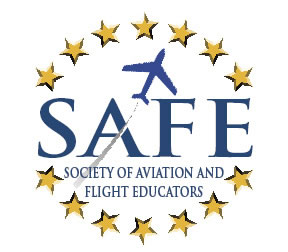 Twin Training and Testing
Twin Training and Testing Twin Training and Testing
Twin Training and Testing

The best way to approach twin training is to first be single-engine current, VFR and IFR, in a complex single. Something like a J-Model Mooney or an Piper Arrow has almost identical power settings and speeds so getting comfortable here first saves half the money. Then, to prepare for the twin, we carefully calculate two-engine, and more importantly, one-engine performance for your plane before each flight. We want to know what this plane will do with two running and also in the "worst case" scenario if we need a single-engine climb. Developing a suspicious regard for engine reliability goes a long way toward multi-engine safety. You have to plan carefully for every failure contingency, brief it and be ready to accomplish the correct drills consistently to be safe.
The first few flights in any new plane (but especially your first twin) will be the "getting to know you" phase. You get familiar with more knobs and switches and where everything is located. In the next flights we dig deeper into systems and performance (still on two engines) and master the two-engine maneuvers required in the ACS. If your scan is slow or we feel the need, tune up on a fully fuctional twin-engine simulator to bring you up to speed. Most ATDs can emulate a twin and get your scan up to speed. Electric power beats avgas (and it's all "logable"). The practical test for twin requires all the standard maneuvering you are already familiar with in a single engine, so we practice all these to get comfortable and proficient first. Then comes the nasty engine and equipment failure modes.
Single-engine maneuvering is necessarily the heart of a multi-engine training program. A lot of study and discussion reveals the true value and liability of having two engines. In the smaller twins, the plane has two engines because it really needs two engines to fly well or fly at all. If you lose an engine you can make it fly level or even climb (in certain conditions) but you have to do everything correctly. "Doing it wrong" and getting too slow would approach what is called Vmc and the danger of losing directional control and rolling over. You learn to first regain control then try to get some performance. When you lose an engine, even though you only lose 50% of the power, you actually lose 80-90% of the climb performance! This is why an engine failure in a twin is four times more likely to end up fatal. You have to learn to work control against performance all while keeping things "greasy side down." You will learn why we "split the ball and raise the dead" to make things work out correctly. The new FAA Safety Web site has some fantastic articles on flying twins after engine failure every interested new or recurrent training pilot should read. Two essential resources for future twin pilots are the FAA Flying Light Twins Safely and the FAA Multi-Engine Safety Review. Knowledge, proficiency, and continual currency are required safety tools in any flying but especially in twins. Cautionary tail: Famous Seminole accident at FIT
The last phase of multi-engine training is learning to do all this flying, one engine or two, while controlling the plane accurately on instruments. Again, being single-engine proficient first is a very good idea. The bigger, heavieris quite stable in roll and solid on the gauges. It takes a while to become familiar with the placement of the radios, and learn to work the unique panel layout and "steam powered GPS." I recommend the comprehensive Jeppesen training kit for the twin and suggest you get the first two chapters read so you understand the basic principles of twin-engine flight before the first flight. Frank Adelstein completed his commercial multi-engine training at East Hill years ago in a Dutchess we had at the time and earned a new (plastic) FAA certificate. I highly recommend the FAA Wings Multi-Engine Safety Review for all pilots transitioning to twins. And for every take-off in a twin, I insist on the FAA Pre-TakeOff data and briefing (TOLD) card completion.